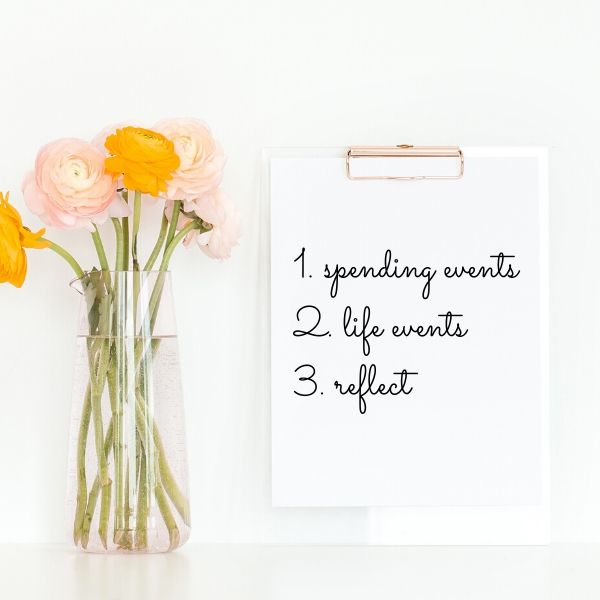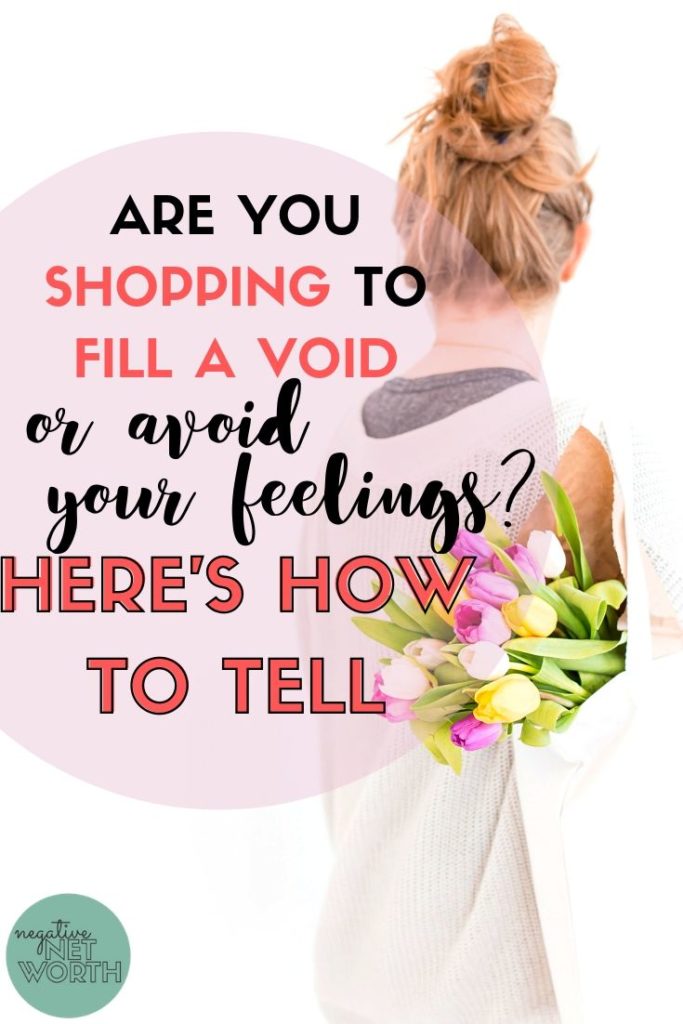
Shopping to fill a void
Shopping to fill a void is one of the most insidious, but overlooked, parts of compulsive spending. Often, when we are in the midst of a shopping problem, we hardly even realize the root cause is emotional…until we are in too deep.
If you’ve made it to this article, you might already recognize that you have shopped to avoid your feelings. But how can you really tell? And what can you do to fix it?
Have you ever sat down and thought about the times when you’ve shopped the most? Perhaps it was a few years ago, or maybe it is now.
Whenever it took place, I want you to take a moment and reflect on that time in your life.
When you shopped the most, What else was going on?
So much of our worst spending and shopping habits are the result of something other than our desire for material things. While we sometimes shop when we are hungry, angry, lonely, or tired, we also shop when there are other things happening in our lives: cataclysmic events, run-of-the-mill stressors, or events that are simply out of our control.
I want to walk through an exercise with you. It’s a few simple steps, and will take about 30 minutes, depending on how the length of your bank statements.
How to Tell If You’re Shopping to Fill a Void (or, to Avoid Your Feelings)
- Identify when your credit card debt was highest. That may even be right now.
- Download your worst bank or credit card statement(s). I’d recommend you print it in hard copy, but going through it on your computer or mobile device works too.
- Go through each line-item, paying particular attention to the dates. This may be painful, but please don’t beat yourself up. There is a point to this.
- Cross-reference the dates on your bank or credit card statement to your own life. If you have a planner, journal, calendar, iCal—any point of reference, aside from your own memory—that may help.
- Next to each item, jot down what was happening that day/month/season. It doesn’t need to be a specific event on a specific day, but it could be. Some examples: “May 5, 2017: Grandpa in the hospital”; “October 2016: Lost job”; “July 19, 2018: Was in the middle of a horrible few months, was trying to seek therapy.”
- Then, take note of when you weren’t spending money. Do this on a separate sheet of paper. For instance: “November-December 2017: Spent a lot of time with family and friends. Recall feeling centered”; or even “March 2018: IDK.” (It’s fine not to remember!)
- Reflect.

Once you have your annotated bank statements before you, you might start to notice a trend:
Your worst spending seasons are related to the hardest points in your life.
And it makes sense. When we are at our worst, our guard is down. It’s hard to fight the impulse to spend when we are already out of control.
It can be easy to get discouraged, to beat yourself up for having spent recklessly, or to simply resign yourself to the fact that you’re a spendthrift. But I want to challenge you to be kinder to yourself. It is entirely normal to seek respite from the difficult seasons in our lives, and the only way to stop the cycle of overpending is to identify when—and then why—you are doing so.
Shopping does not need to be, and should not be, an escape from reality or a salve for your pain. The next time you feel the urge to browse mindlessly through an online sale, or take yourself to Nordstrom, you might consider writing down what is happening to you…before you spend money.
How to stop shopping to fill a void
One of the best ways to stop the cycle of compulsive spending is to throw a wrench in the works by being more aware. My favorite way is to use The No Buy Workbook, which you can get for FREE here:
First, the workbook will guide you through whether you need a No Buy. One of the best indicators is that you are engaging in emotional spending. Next, you will identify your WHY—your motivation to stop shopping. Finally, the workbook will guide you through HOW to have a successful No Buy, by anticipating and overcoming obstacles before they occur.
Journaling, therapy, and mindfulness are all great tools to use to get to the root of your spending problems. It takes practice and dedication. But once you clear that hurdle, you are free to start saving money, and clear your way into a steadier financial future.
Hopefully, by identifying whether you are shopping because you actually need something new—or because something else is happening—you can stop the cycle. Even if just for today.

want to remember this post? pin it for later!


Leave a Reply